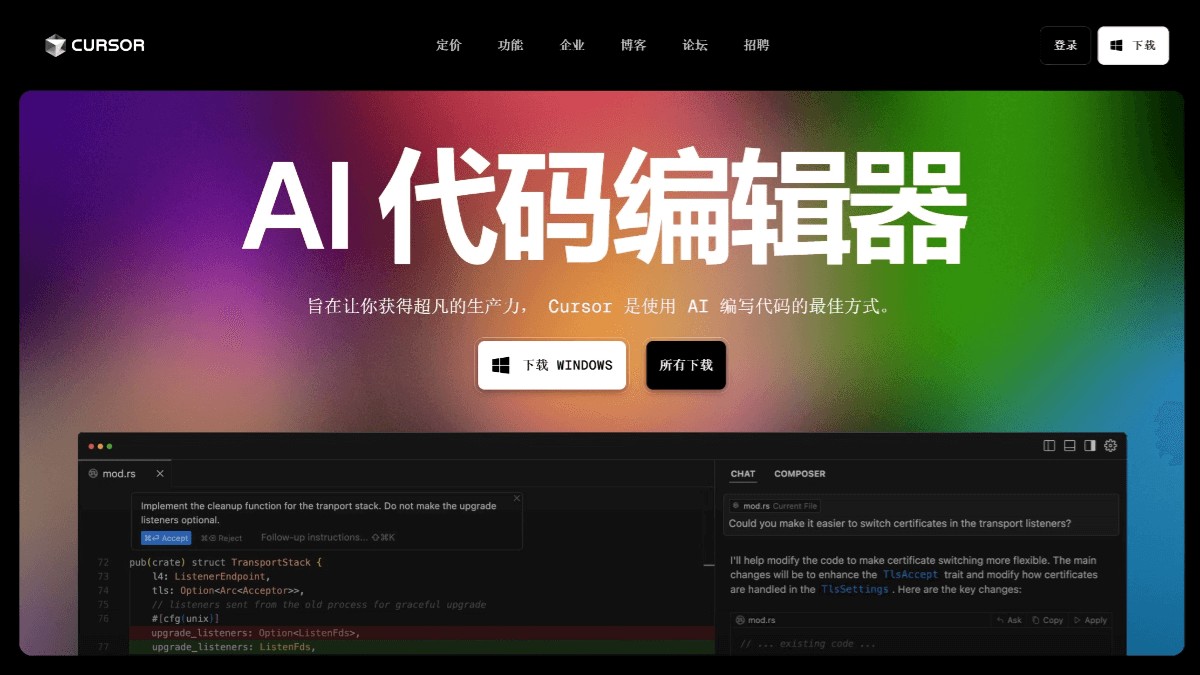
In recent years, breakthrough advances in artificial intelligence (AI) in the field of voice technology are changing the way we interact with digital devices. From smart homes to customer service to entertainment and education, applications for voice technology are growing. As an advanced representative in this field, Ortensia AI speech model leads a new trend in voice interaction with its natural, realistic and emotional speech synthesis function.
This article will introduce in detail the technical characteristics, application scenarios, advantages and potential challenges of the Ortensia AI speech model to help you better understand how this innovative technology changes our lives.
Ortensia AI speech model is a speech synthesis technology based on deep learning and neural networks, designed to provide an extremely natural and emotional voice interaction experience. Unlike traditional text-to-speech (TTS) technology, the Ortensia model simulates subtle changes in human speech to generate speech that is not only realistic but also full of emotion. This makes the conversation between machines and humans more natural, smooth and expressive.
Ortensia's speech synthesis technology enables it to deliver highly customized and context-aware speech output by training models to recognize and replicate various aspects of human speech, such as intonation, emotion, pitch and rhythm. Whether it’s a calm tone, an excited tone, or a caring voice, Ortensia performs exactly as needed, enhancing the emotional connection when interacting with the machine.
1. Natural and realistic speech synthesis
One of the most outstanding features of the Ortensia AI speech model is its highly natural speech output. It can accurately imitate various emotional details in human speech, such as intonation changes, speech speed adjustments, and emotional expressions, making the machine-generated voice sound not only like a human voice, but more like an emotionally rich interlocutor. This feature makes Ortensia ideal for use in scenarios that require emotional interaction, such as virtual assistants and customer service.
2. Multi-language and multi-accent support
The Ortensia AI speech model supports the synthesis of multiple languages and accents, providing a consistent and natural speech experience for users around the world. Whether in English, Mandarin, French, or other languages, Ortensia can accurately restore the language characteristics and pronunciation habits of different languages. In addition, Ortensia can also optimize speech output according to different cultural backgrounds and regional habits to ensure that the speech is more in line with the expectations of target users.
3. Emotion recognition and adaptive speech
Another innovative feature of Ortensia is its emotion recognition capabilities. Through advanced natural language processing (NLP) technology, Ortensia is able to understand emotions based on the context of conversation content and adjust speech output in real time. For example, in a customer service scenario, if a customer expresses dissatisfaction, Ortensia can automatically adjust the tone of voice to be calmer and more empathetic to alleviate the customer's displeasure. This function greatly improves the intelligence and interactivity of AI voice, making it more humane in human-computer interaction.
4. Real-time voice response and efficient processing
Ortensia uses advanced deep learning algorithms to quickly analyze and understand input language content and generate real-time speech responses. This enables Ortensia to efficiently provide smooth conversational experiences in voice assistants, customer support, and voice interaction systems. In addition, Ortensia's processing power is so powerful that it can still respond quickly and accurately to complex questions and inquiries.
1. Virtual assistants and smart devices
Ortensia AI speech models have broad application potential in virtual assistants and smart devices. Through its natural speech synthesis and emotional speech output, Ortensia can provide users with a more thoughtful and realistic interactive experience. For example, smart home devices can provide more natural and personalized voice responses through the Ortensia model, making users' interactions with home devices more pleasant.
2. Customer service and support
In the field of customer service, Ortensia can significantly improve the performance of AI customer service robots. Its warm and empathetic voice can effectively alleviate customer dissatisfaction and improve customer satisfaction. By combining with NLP technology, Ortensia can also understand customer problems and respond accurately, reducing customer waiting time and improving work efficiency.
3. Entertainment and Media
Ortensia's speech synthesis technology also brings new opportunities to the entertainment industry. In video games, virtual reality (VR) and film production, Ortensia can provide realistic voice performance for virtual characters, helping to create more vivid and expressive characters. In addition, Ortensia can also provide multi-language voice support for global audiences, breaking language barriers and enhancing the immersion of global users.
4. Education and language learning
In the field of education, Ortensia's speech synthesis technology can provide language learners with standard and emotional pronunciation demonstrations, helping students better master pronunciation and intonation. In addition, Ortensia can provide interactive voice responses for educational applications, facilitating dialogue between students and learning tools and improving learning outcomes.
1. Enhance user experience
Ortensia's natural language processing and emotional speech synthesis enhance the interaction between users and machines. Compared with traditional speech models, Ortensia is better able to convey emotions in conversations, making users feel that communication with machines is more humane and intimate.
2. Cost-effectiveness
For businesses, Ortensia offers cost-saving solutions. By replacing traditional human customer service, Ortensia can reduce labor costs while maintaining high quality service. Especially when processing a large number of customer inquiries, the efficiency of the AI voice model can significantly improve work efficiency.
3. Personalization and customization
The high degree of customization of the Ortensia model allows businesses to create unique customer experiences by tailoring their voice to brand style, user needs and even emotional preferences. This advantage is particularly useful in scenarios that require highly personalized voice services, such as customer support, virtual assistants, and brand interactions.
Although the Ortensia AI speech model has many advantages, it also faces some challenges, especially in terms of ethics and privacy issues. First, with the advancement of AI voice technology, the risk of counterfeiting and misuse of technology is also increasing. The misuse of technologies like deepfake can lead to the spread of disinformation and identity theft. Secondly, data privacy issues remain a focus for many users and enterprises. How to use AI technology on the basis of ethics and protect user data security is still a difficult problem that needs to be solved in the development of technology.
The Ortensia AI speech model represents the latest advancement in speech synthesis technology. Through its highly natural, emotional and customizable speech output, Ortensia not only shows great potential for applications in entertainment, customer service, education and other fields, but also opens up new possibilities for how we interact with machines. With the continuous optimization of technology and expansion of applications, Ortensia is expected to become the standard for voice interaction in the future, promoting the further popularization and innovation of artificial intelligence in various industries.
However, while enjoying the convenience brought by technology, we must also pay attention to data privacy and ethical issues, and ensure that the use of technology can be carried out within a compliance and ethical framework.



